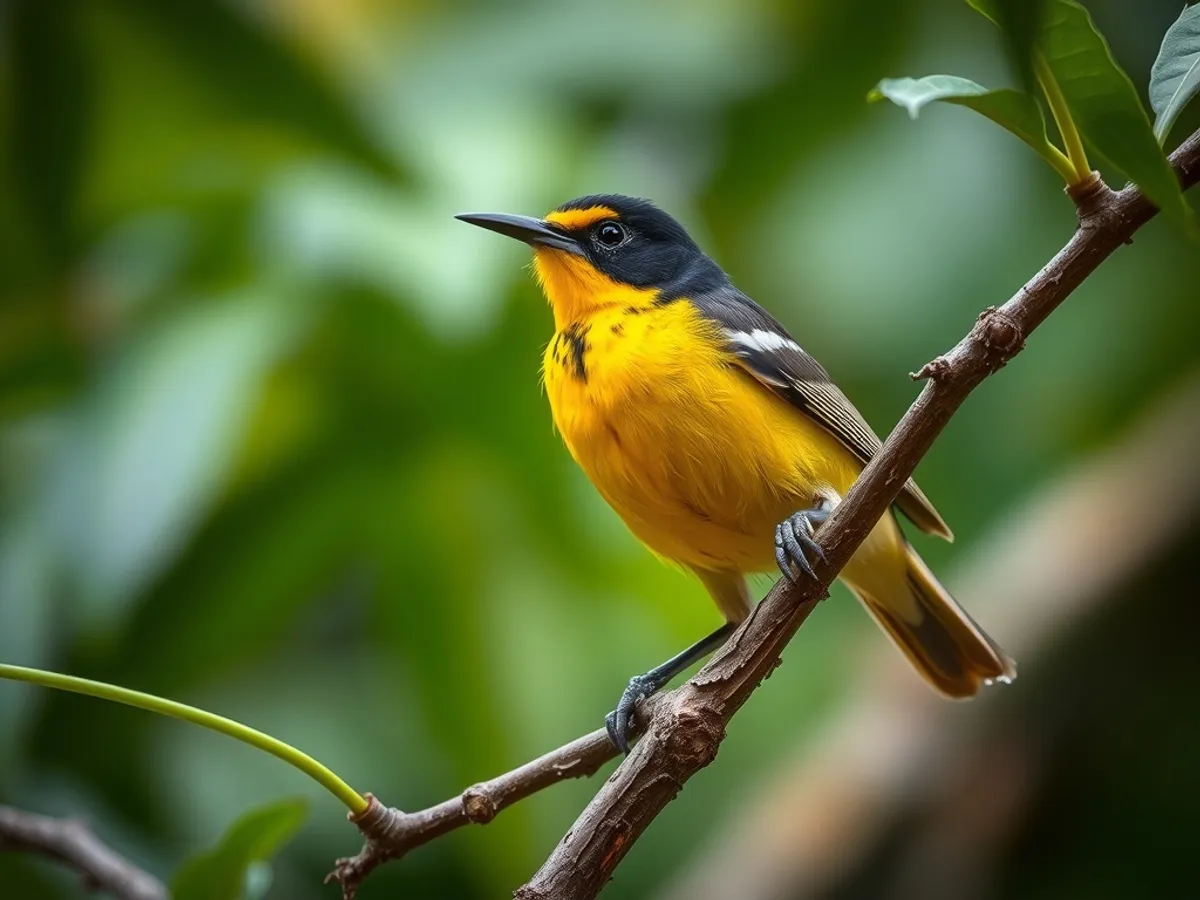
Bananaquit
Coereba flaveola
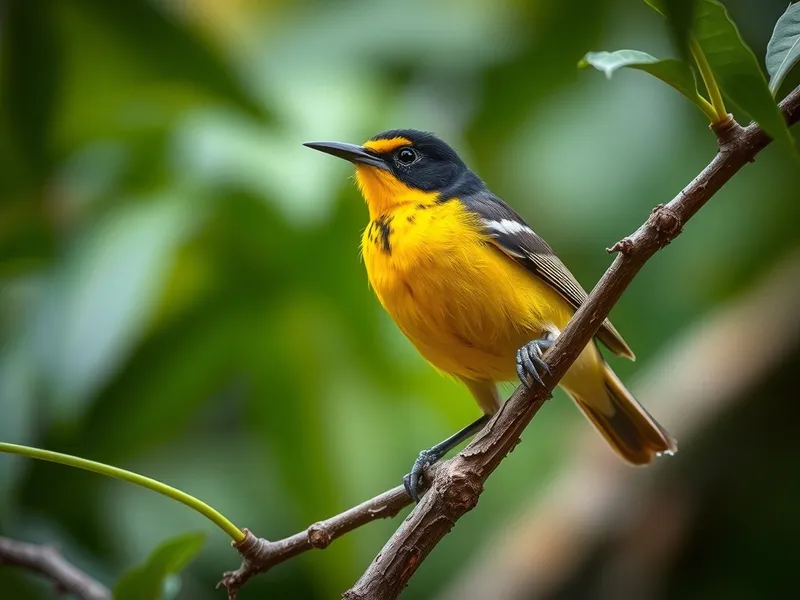
Meet the Bananaquit
The Bananaquit is a small, energetic songbird native to the tropical and subtropical regions of the Americas, especially the Caribbean. Recognizable by its curved bill, dark gray upperparts, and bright yellow underparts, it is often seen flitting among flowers and foliage. This bird is highly adaptable, thriving in a variety of habitats, from gardens and plantations to forests and shrublands. Its agility and inquisitive nature make it a frequent visitor to nectar feeders, where it is loved for its lively behavior. The Bananaquit plays an important role in pollination thanks to its fondness for floral nectar.
Classification
Bird
Habitat
Tropical and subtropical forests, gardens, and shrublands
Diet
Omnivore
Lifespan
5–7 years
Conservation
Least Concern
Weight
5–19 grams
📖Fascinating Facts
Expert Nectar Feeder
The Bananaquit uses its slender, curved bill to expertly extract nectar from flowers, acting as both a pollinator and sometimes a nectar thief.
Unique Nest Builder
It constructs ball-shaped nests with side entrances, using plant fibers, grass, and even bits of cloth or string found near human habitation.
Highly Adaptable
Bananaquits thrive in a wide range of environments, from wild forests to cultivated gardens and urban parks.
📋Detailed Description
The Bananaquit (Coereba flaveola) is a small, slender passerine bird, typically measuring 10–13 cm (4–5 in) in length and weighing 5–19 g (0.18–0.67 oz), with considerable variation across its numerous subspecies. It is instantly recognizable by its sharply decurved bill, which is well-adapted for extracting nectar from flowers, and by its striking plumage: a blackish-gray crown and upperparts, a conspicuous white supercilium (eyebrow stripe), and bright yellow underparts. The wings and tail are dark, often edged with white or pale gray. Sexual dimorphism is minimal, with males and females appearing similar, though juveniles are generally duller. Bananaquits are highly agile and acrobatic, often seen clinging upside-down to flowers or leaves. Their vocalizations include a high-pitched, rapid series of squeaks and trills, which serve both territorial and contact purposes. This species is notable for its adaptability, thriving in a wide range of habitats from primary forests to urban gardens. Its diet is omnivorous, consisting mainly of nectar, but also including fruits, insects, and small arthropods. The Bananaquit is a year-round resident throughout its range, which extends from southern Mexico and Central America through much of the Caribbean and into northern South America and Brazil. Its ecological role as a pollinator is significant, as it visits a wide variety of flowering plants, sometimes piercing the base of flowers to access nectar, a behavior known as 'nectar robbing.'
💡 Did you know?
Despite its name, the Bananaquit does not specialize in eating bananas, but rather feeds mainly on nectar, fruits, and insects.
🔬Research & Sources
Wikipedia Summary
The bananaquit is a species of passerine bird in the tanager family Thraupidae. Before the development of molecular genetics in the 21st century, its relationship to other species was uncertain and it was either placed with the buntings and New World sparrows in the family Emberizidae, with New World warblers in the family Parulidae or its own monotypic family Coerebidae. This small, active nectarivore is found in warmer parts of the Americas and is generally common.
Last Modified: 5/24/2025
🎭Behavior & Social Structure
Bananaquits are diurnal and highly active, spending much of the day foraging for nectar, fruits, and insects. They exhibit a rapid, darting flight and are adept at hovering briefly, similar to hummingbirds, though they more commonly perch while feeding. Socially, they are generally solitary or found in pairs, but may form loose flocks, especially in areas with abundant food resources. Territoriality is pronounced during the breeding season, with males defending feeding and nesting territories through song and physical displays. Their feeding behavior is opportunistic; they exploit a wide range of plant species and are frequent visitors to artificial nectar feeders in gardens. Bananaquits also show remarkable problem-solving abilities, such as learning to pierce plastic feeders or flower bases to access nectar. They maintain regular preening and bathing routines to keep their plumage in optimal condition.
👶Reproduction & Life Cycle
Breeding occurs throughout the year in tropical regions, but may be more seasonal in areas with pronounced wet and dry periods. Bananaquits are monogamous during the breeding season, with pairs cooperating in nest building. The nest is a distinctive, globular structure with a side entrance, constructed from plant fibers, grasses, and sometimes artificial materials, and is often placed in shrubs, trees, or even on man-made structures. Clutch size ranges from 2 to 3 eggs, which are white with reddish-brown spots. The female incubates the eggs for about 12–14 days, while the male may assist in feeding her. After hatching, both parents feed the chicks, which fledge after 15–20 days. Multiple broods per year are common, and in some populations, Bananaquits may reuse or repair old nests.
🛡️Adaptations & Survival
The Bananaquit's most notable adaptation is its slender, curved bill, which allows efficient extraction of nectar from a wide variety of flowers, including those with deep corollas. Its tongue is tubular and brush-tipped, further aiding in nectar feeding. The species is highly adaptable behaviorally, able to exploit both native and introduced plant species, and readily adjusts to human-altered environments. Its acrobatic foraging style enables it to access food sources unavailable to less agile birds. Bananaquits also display a high degree of ecological flexibility, shifting their diet to include more insects or fruit when nectar is scarce. Their rapid reproductive cycle and ability to nest in a variety of locations contribute to their resilience.
📚Research Sources
🎨Cultural Significance
The Bananaquit is a familiar and beloved bird throughout the Caribbean and parts of Latin America, often featured in local folklore and art. Its cheerful presence in gardens and its role as a pollinator have made it a symbol of vitality and adaptability. In some Caribbean cultures, it is associated with good luck or considered a messenger of the gods. The bird is also the national bird of St. Kitts and Nevis, where it is known as the 'Sugar Bird.' While not traditionally hunted or used for food, its ecological importance and charismatic behavior have made it a subject of interest for birdwatchers and ecotourism.
🔬Recent Research & Discoveries
Recent molecular phylogenetic studies have clarified the Bananaquit's taxonomic placement within the Thraupidae family, resolving decades of uncertainty about its evolutionary relationships. Research has also focused on its role as a pollinator, with studies documenting its interactions with both native and introduced plant species, and its impact on plant reproductive success. Behavioral studies have highlighted the Bananaquit's cognitive abilities, including problem-solving and learning, particularly in relation to accessing novel food sources. Ongoing research is examining the effects of urbanization and climate change on its foraging ecology and breeding patterns. Additionally, the species' extensive geographic variation—over 40 recognized subspecies—makes it a model for studying adaptation and speciation in island environments.
🎥Wildlife Videos

Common vs rare: MEET THE BANANAQUIT, PROBABLY THE COMMONEST AND MOST BEAUTIFUL BIRD IN BRAZIL.
Continuing my journey around Brazil, this video is a brief look at the natural history of the bananquit , a nectarivorous songbird of ...
The Practical Animal
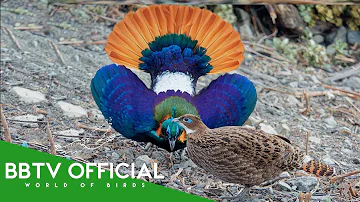
30 Most Beautiful Creatures On Earth (Order Galliformes) | Wildlife Documentary | BBTV Official
In the heart of the world's most remote forests and rugged highlands, where mist lingers over ancient trees and the wilderness ...
BBTV Official

Birds: Melodies, Feathers, and Flight | Full Wildlife Documentary
Melodious calls, vibrant feathers and the power of flight … uplifting, inspiring qualities bestowed on the multitude of birdlife that ...
Get.factual
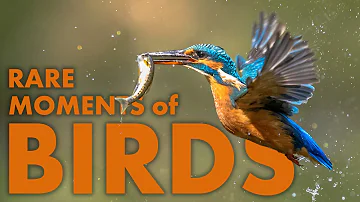
AMAZING LIFE OF BIRDS | Full Wildlife Documentary
This video is dubbed in 8 languages: Welcome to Amazing World of Birds — a ...
Wildlife Film Central
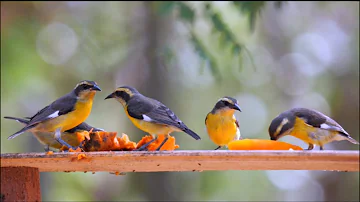
Bananaquits
Bananaquit (Coereba flaveola) in Colombia. This is a species of passerine bird of uncertain relation. This small, active nectarivore ...
Birdfun

David Attenborough | Nature Documentary To Fall Asleep To (ai)
"Life on Earth" is your gateway to the breathtaking world of wildlife and natural wonders. Through captivating documentaries, we ...
Life on Earth - David Attenborough
🌍Habitat Information
The Bananaquit typically inhabits Tropical and subtropical forests, gardens, and shrublands environments. Bananaquits have adapted to their environments with specialized features and behaviors.
Primary Habitat:
Tropical and subtropical forests, gardens, and shrublands
More detailed habitat information will be available soon.
🛡️Conservation Status
The Bananaquit is currently classified as Least Concern. Conservation efforts are crucial for preserving this species for future generations.
Common Threats:
- 🏠Habitat loss and fragmentation
- 🌡️Climate change impacts
- 🎯Hunting and poaching
- 🏭Human-wildlife conflict
⚠️Threats & Conservation Challenges
Currently assessed as Least Concern by the IUCN, the Bananaquit faces few significant threats due to its broad range and adaptability. However, local populations may be affected by habitat destruction, pesticide use, and competition with invasive species. In some areas, nest predation by mammals, reptiles, and other birds poses a challenge. Climate change could potentially impact flowering phenology and nectar availability, indirectly affecting Bananaquit populations. Despite these challenges, the species remains common and stable across most of its range, benefiting from its ability to thrive in human-modified landscapes.
🔬Scientific Classification
Scientific Name
Coereba flaveola
Classification Hierarchy
🔍 About Taxonomic Classification
Taxonomic classification is a hierarchical system used by scientists to classify and organize living organisms based on shared characteristics and evolutionary relationships.
The system moves from broad categories (Kingdom) to increasingly specific ones, with each animal's scientific name typically consisting of its Genus and species.
📝Community Notes
Share your observations and insights about the Bananaquit with our community of wildlife enthusiasts.
Join Our Community
Sign in to share your observations and connect with fellow wildlife enthusiasts.
Sign In to ContributeNo community notes yet
Be the first to share your observations about the Bananaquit!
Explore Bananaquit
Select a tab above to learn more about this amazing animal.
📸Photo Gallery
No photos available for this animal yet.
🌟Discover More Wildlife
Continue your journey of discovery with more fascinating animals from our database
